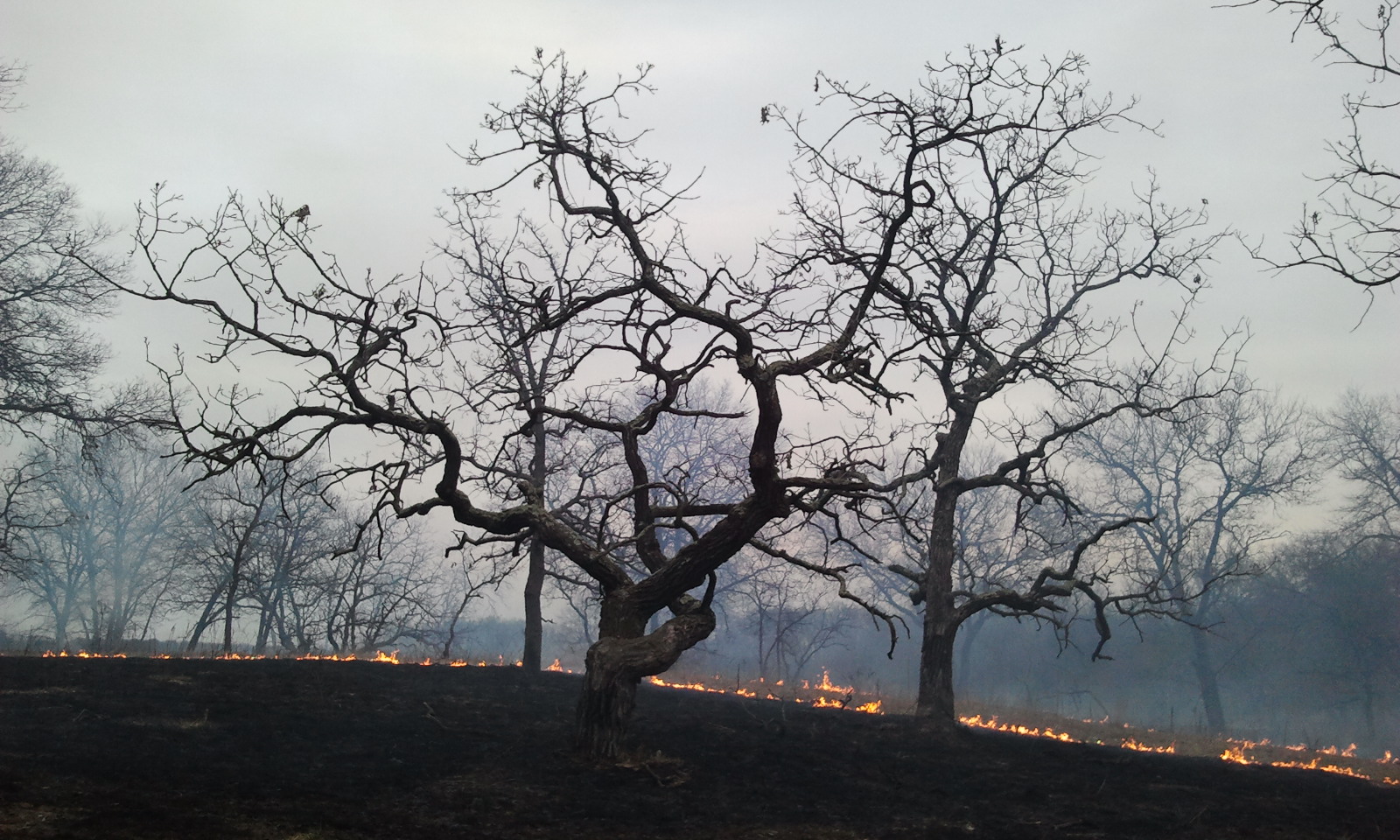
Savanna bur oaks during a spring controlled burn at Cedar Creek Ecosystem Reserve LTER.
Credit: Susan Barrott CC BY-SA 4.0
Wildfires have made headlines worldwide in recent years — and for good reason. Evidence points to increasing wildfire frequency and intensity across many vulnerable ecosystems as climate change impacts grow ever more evident. However, periodic wildfires in ecosystems adapted to them can actually help inhibit plant disease outbreaks, according to new research from Cedar Creek Ecosystem LTER.
Interactions between disturbances like fire and disease are likely to significantly impact whether an ecosystem changes state (e.g. from woodland to grassland), but such interactions have rarely been studied over long periods. Researchers surveyed vegetation plots at Cedar Creek for 35 years as part of a fire frequency experiment that has been maintained for over half a century. The temperate oak savanna–forest ecotone that comprises these plots recently experienced a novel outbreak of a fungal pathogen called oak wilt. In the absence of disease, tree population sizes were strongly influenced by fire frequency, with unburned plots transitioning from savanna to forest, while intermediately and frequently burned plots remained savanna. However, oak wilt rapidly reversed the effect of fire exclusion, increasing mortality by 765% in unburned forests while having relatively minor effects in frequently burned savannas.
The savannas include two main tree species: Quercus ellipsoidalis (red oak group; northern pin oak) and Q. macrocarpa (white oak group; bur oak). At Cedar Creek, oak wilt (Bretziella fagacearum) has spread rapidly in the last decade, leading to exponential increases in tree mortality, particularly of red oaks. Because local disease spread is largely via roots, and because soil heating during fire is minimal in the Cedar Creek burns, researchers think it is unlikely that fire has direct sterilising effects by killing the disease. Trends in tree populations changed strikingly from 2010 to 2018, with rapid declines in tree biomass in several plots, coinciding with the outbreak of oak wilt.
Disease invasion decreased tree biomass, increased light penetration and grass cover, and shifted tree populations from being dominated by fire‐resistant adults to fire‐sensitive saplings, especially in the unburned plots. Pellegrini et al.’s model predicted that disease increased an ecosystem’s vulnerability to hypothetical future fire by moving them into a ‘diseased woodland’ structure that rapidly transitioned to savanna when fires were reintroduced. Taken together, the study shows that shifting pathogens can alter the effect of fire frequency in ways that may influence the distribution of savanna and forest ecosystems.
Pathogen pressure may be further altered as climate change shifts the spread of vectors. Consequently, the relevance of plant pathogens to savanna–forest biome distributions may be more important than previously considered. This Cedar Creek LTER study shows that disease–fire interactions could shift ecosystem resilience and biome boundaries as pathogen distributions change with climate or land-use patterns. These pressures may be exacerbated by herbivory patterns and rising CO2, warranting further study in order to understand important mechanisms contributing to ecosystem resilience and transition.
Kristen Weiss
Reference: Pellegrini, A.F.A., Hein, A.M., Cavender‐Bares, J., Montgomery, R.A., Staver, A.C., Silla, F., Hobbie, S.E. and Reich, P.B. (2021), Disease and fire interact to influence transitions between savanna–forest ecosystems over a multi‐decadal experiment. Ecology Letters. https://doi-org.proxy.library.ucsb.edu:9443/10.1111/ele.13719










